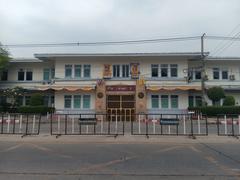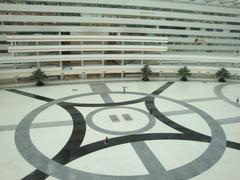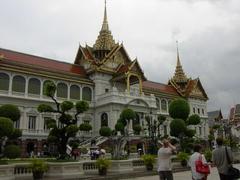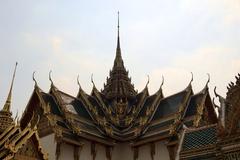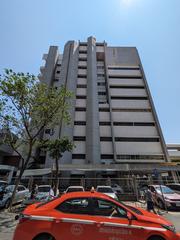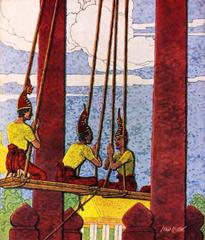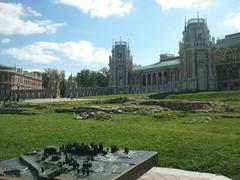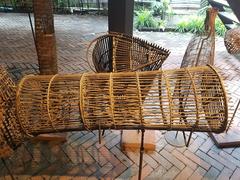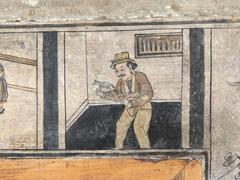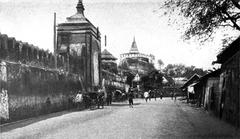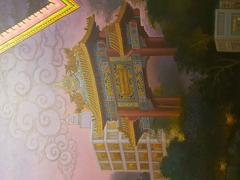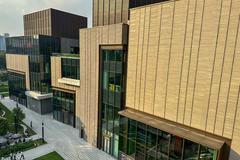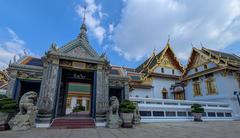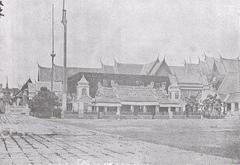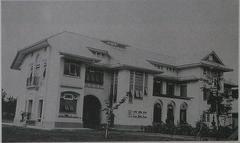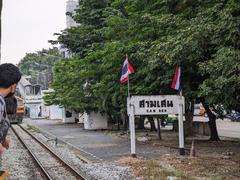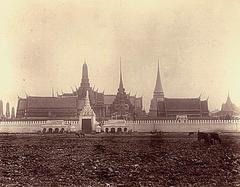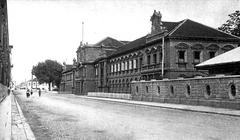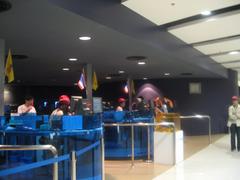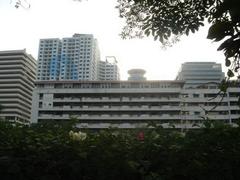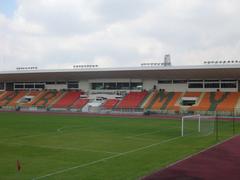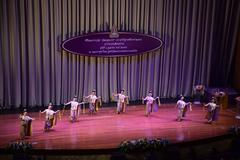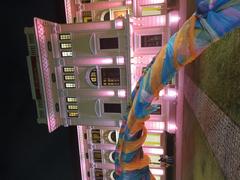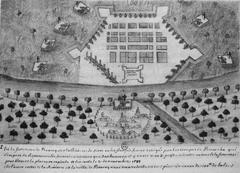Visiting Wat Samphran: Hours, Tickets, and Historical Significance
Date: 24/07/2024
Introduction
Wat Samphran, often referred to as the Dragon Temple, is a mesmerizing Buddhist temple located approximately 40 kilometers west of Bangkok, Thailand. Known for its distinctive 17-story pink cylindrical tower encircled by a colossal green dragon, Wat Samphran offers a unique blend of architectural grandeur and spiritual significance. The temple, constructed in the early 1980s, stands as a testament to the harmonious fusion of traditional Thai Buddhist architecture and Chinese cultural elements. The dragon, symbolizing power, strength, and good fortune, coils around the tower, creating a mythical and awe-inspiring sight. Despite its enchanting appearance, Wat Samphran has a complex history, marked by a scandal in 2004 that led to the temporary closure of the temple. Today, it remains a place of worship and meditation, drawing visitors who seek both spiritual enrichment and architectural marvel (InWanderment, A World to Live). This guide aims to provide comprehensive information on visiting Wat Samphran, covering its history, architectural features, visitor tips, cultural insights, practical information, and nearby attractions. Whether you’re a history enthusiast, a spiritual seeker, or a curious traveler, Wat Samphran promises a memorable and enriching experience.
Table of Contents
- Introduction
- History and Significance
- Architectural Features
- Visitor Tips
- Cultural Insights
- Practical Information
- Conclusion
- FAQ
History and Significance
Wat Samphran, also known as the Dragon Temple, is a unique Buddhist temple located in Amphoe Sam Phran, Nakhon Pathom province, about 40 kilometers west of Bangkok. This temple stands out due to its distinctive architectural design, featuring a 17-story pink tower wrapped by a giant green dragon. The temple was constructed in the early 1980s, inspired by traditional Thai Buddhist architecture with a touch of Chinese influence. The dragon, which symbolizes power, strength, and good fortune in Chinese culture, adds a mystical element to the temple’s design.
The temple’s height of 80 meters is symbolic, as it is said that Buddha passed away at the age of 80. The dragon’s ascent from the base to the top of the tower represents the journey from sorrow to happiness or from hell to heaven. Despite its enchanting appearance, Wat Samphran has a dark past. In 2004, the temple’s abbot was sentenced to 150 years in prison for sexual abuse, a scandal that led to the temple’s temporary closure. However, the temple has since reopened and continues to serve as a place of worship and meditation for local Buddhists (InWanderment).
Architectural Features
Wat Samphran’s most striking feature is its 80-meter tall, rose-pink cylindrical tower, around which a massive green dragon coils. The dragon’s head rests at the top of the tower, creating a dramatic and awe-inspiring sight. The tower itself is dotted with numerous windows, providing natural light and ventilation to the interior spaces. Visitors can walk inside the dragon’s body, which contains a spiral staircase leading to the top of the tower. This unique design allows visitors to experience the temple’s grandeur from within the dragon’s embrace (A World to Live).
Other Architectural Elements
The temple grounds are equally captivating, featuring statues of various animals, including elephants, turtles, and white rabbits, which add to the mythical ambiance. The gardens surrounding the temple are well-maintained and provide a peaceful setting for meditation and reflection. Flags flying high at the top of the tower, alongside the dragon’s head, enhance the temple’s majestic appearance (InWanderment).
Visitor Tips
Getting There
Wat Samphran is located approximately 40 kilometers west of Bangkok, making it a convenient day trip from the city. The temple is accessible by car, taxi, or public transportation. Visitors can take a bus from Bangkok’s Southern Bus Terminal (Sai Tai Mai) to Nakhon Pathom and then hire a taxi or tuk-tuk to reach the temple. Alternatively, renting a car or booking a private tour can provide a more comfortable and direct route to the temple (Syd Abroad).
Best Time to Visit
The best time to visit Wat Samphran is during the cooler months from November to March, when the weather is dry and pleasant. Visiting early in the morning or late in the afternoon can help avoid the midday heat and provide better lighting for photography. The temple is less crowded during weekdays, offering a more serene and intimate experience (Syd Abroad).
What to Bring
Visitors should dress modestly, as Wat Samphran is a place of worship. Wearing comfortable shoes is advisable, especially if planning to climb the dragon’s spiral staircase. Bringing a hat, sunscreen, and water is recommended to stay hydrated and protected from the sun. A camera is essential for capturing the temple’s unique architecture and the stunning views from the top of the tower (InWanderment).
Cultural Insights
Wat Samphran serves as a significant cultural and religious landmark for both locals and visitors. The temple’s design reflects a blend of Thai and Chinese architectural styles, symbolizing the harmonious coexistence of different cultural influences in Thailand. The dragon, a prominent figure in Chinese mythology, represents power, strength, and good fortune, while the pink tower embodies traditional Thai Buddhist architectural elements.
Religious and Cultural Artifacts
Inside the temple, visitors will find various shrines and religious artifacts where they can pay their respects and engage in meditation. The temple grounds also feature statues of animals and mythical creatures, adding to the site’s mystical atmosphere. Wat Samphran’s unique design and serene environment make it an ideal location for those seeking spiritual enrichment and a deeper understanding of Thai Buddhist culture (A World to Live).
Practical Information
Admission and Opening Hours
Wat Samphran is open daily from 8:00 AM to 5:00 PM. There is no official admission fee, but donations are appreciated to help maintain the temple and its grounds. Visitors are encouraged to contribute to the temple’s upkeep and support the local community (Syd Abroad).
Nearby Attractions
While visiting Wat Samphran, travelers can explore other nearby attractions to make the most of their trip. The Nakhon Pathom province is home to several other notable temples and cultural sites, including Phra Pathom Chedi, the tallest stupa in the world, and Sanam Chandra Palace, a beautiful royal residence with well-manicured gardens. These sites offer additional opportunities to learn about Thailand’s rich cultural heritage and history (InWanderment).
FAQ
What are the visiting hours for Wat Samphran?
Wat Samphran is open daily from 8:00 AM to 5:00 PM.
Is there an admission fee to visit Wat Samphran?
There is no official admission fee, but donations are appreciated to help maintain the temple and its grounds.
How can I get to Wat Samphran from Bangkok?
Visitors can take a bus from Bangkok’s Southern Bus Terminal (Sai Tai Mai) to Nakhon Pathom and then hire a taxi or tuk-tuk to reach the temple. Alternatively, renting a car or booking a private tour is also an option.
What should I wear when visiting Wat Samphran?
Visitors should dress modestly, as it is a place of worship. Comfortable shoes, a hat, sunscreen, and water are also recommended.
Conclusion
Wat Samphran, with its unique architectural design and serene atmosphere, offers a memorable experience for visitors seeking to explore Thailand’s cultural and religious landmarks. The temple’s blend of Thai and Chinese influences, combined with its symbolic elements, provides a fascinating insight into the country’s diverse heritage. Whether climbing the dragon’s spiral staircase, meditating in the peaceful gardens, or simply admiring the temple’s grandeur, a visit to Wat Samphran is sure to be a highlight of any trip to Bangkok (A World to Live).
Call to Action
For more travel tips and guides, download the mobile app Audiala, explore other related posts on our site, and follow us on social media for regular updates.
References
- InWanderment, 2023, Wat Samphran
- A World to Live, 2023, Wat Samphran Dragon Temple
- Syd Abroad, 2023, Dragon Temple in Bangkok

